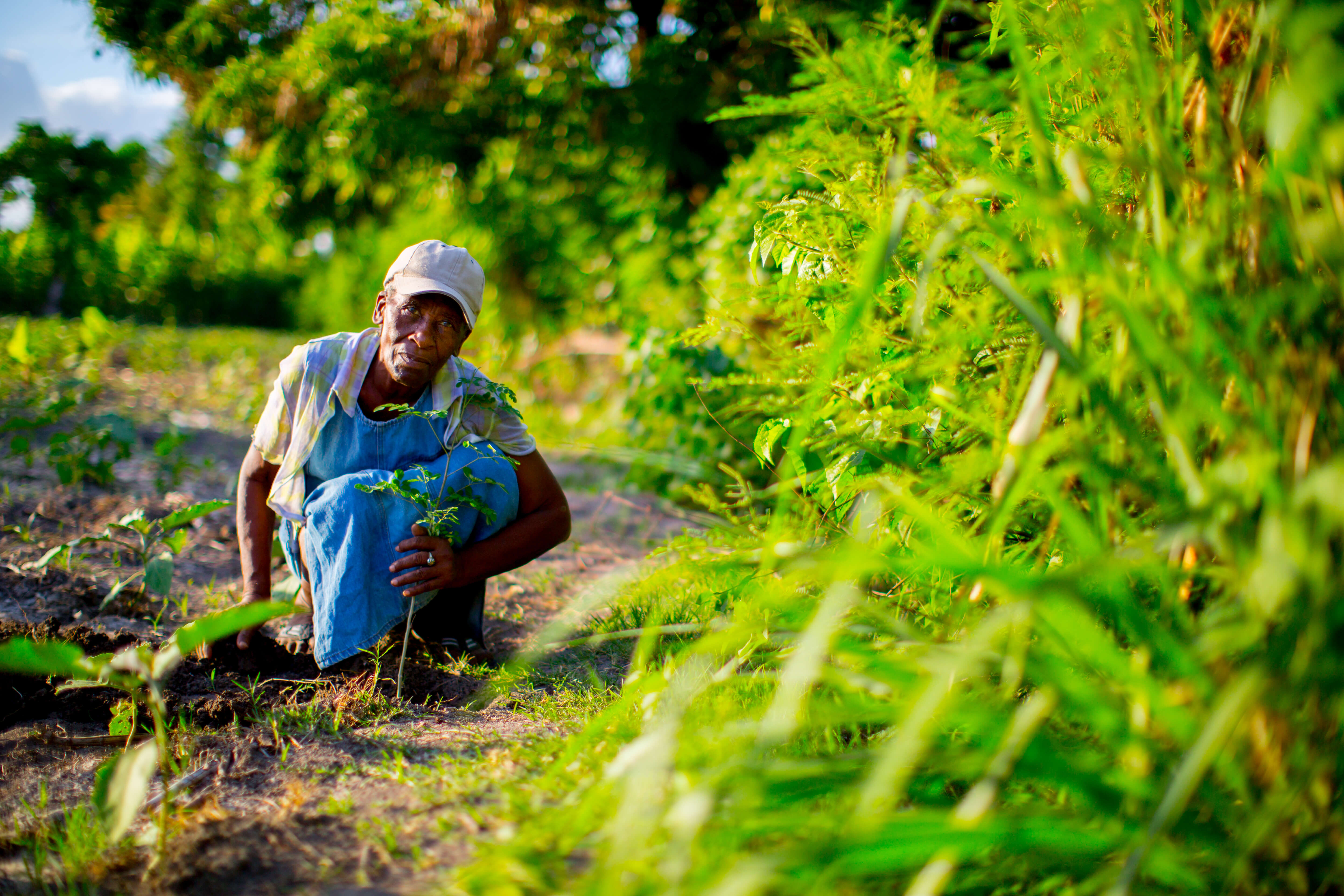
24K Trees Planted in Kenya, Haiti, and India
November 27, 2018 3 min read
24K Trees Planted in Kenya, Haiti, and India
This has been an incredible year of growth for One Tree Planted, and we’re planting more trees than ever before. Today we’d like to share three reforestation stories in different parts of the world. If you love knowing the juicy details of how we go about this work and want see local communities in action, then this is for you.
Kenya – 10,000 Trees Planted
Kijabe and environs, Kiambu and Nakuru Counties

We previously wrote a spotlight on this project with the Kijabe Forest Trust when it was in the planning stages, and we’re happy to share that most of these trees have now been planted, with capacity expanded for even more restoration work in the future.
Tree species planted include Juniperus procera, Olea europaea ssp. africana, Croton megalocarpus, Podocarpus falcautus, Dombeya sp. and Warburgia ugandensis.
The goals here were to restore areas that have been subjected to intense degradation over the last two decades, mainly due to land use pressure, and poor enforcement of forest usage rules. After extensive degradation, erosion and landslides have further hampered efforts for successful natural regeneration. The project seeks to enhance regeneration through enrichment planting and create erosion control. Reducing further damage through patrols is also part of the overall restoration plan for the region.












An additional impact will be to help secure the vital watershed, which serves roughly 200,000 people in the local area, and millions more through climate stabilization services.
Habitat restoration will also benefit increases in biodiversity. The project area is home to a wide variety of wildlife including top tier predators such as leopard and spotted hyena. The forest also provides critical habitat for critically endangered African wild dog which has been observed using the forest corridor. And this forest is a critical flyover stop for paleartic migratory birds and represents critical transitional habitat between the upland humid forests and the lowland Acacia-Commiphora woodlands.
Overall, 5 hectares were reforested, with 33 professional staff members and 10 volunteers. Direct beneficiaries are estimated at approximately 50 families, while extended beneficiaries are likely in the thousands.




Haiti – 4,000 Trees Planted
Gonaives, Haiti
The focus of this project was centered around business solutions to help feed and reforest a renewed Haiti by establishing market-based farmer cooperatives, building agricultural export markets, creating rural farm businesses, and contributing to community development. In a unique model, trees are used as "bio-currency," making trees more valuable in the ground than cut for charcoal (an otherwise common practice that reforestation is helping to reduce) by having farmer-member cooperatives plant trees in order to earn the seed, tools and training required for higher crop quality and yields on their farms. Organic agriculture is also promoted via an ecological production management system that builds good soil, enhances biodiversity, and uses no chemical inputs.
Tree species planted included Moringa, Breadfruit, Papaya, and Spanish cedar.






Our partners for this project are the Smallholder Farmers Alliance.
Here are some interesting stats about this approach to agroforestry:
40% estimated average increase in crop yields by farmer members.
50% estimated average increase in household income by farmer members.
3,400 estimated number of additional children of farmer-members in school.
13,520 estimated total number of farmers and their family members positively impacted by Smallholders Farmers Alliance.
6,300 acres under cultivation by farmer members (2,550 hectares).
And here’s more information about this reforestation model from the co-founder and president of the Smallholder Farmers Alliance, Hugh Locke.
India – 10,000 Trees Planted
Villages of Lalitpur district, Bundelkhand region, Uttar Pradesh, India
The focus of this project was to plant native fruit trees in order to (1) alleviate hunger by providing food & nutrients to local communities, (2) promote biodiversity through soil, plant, and food enrichment without the use of pesticides or added pollution, and (3) provide income to locals who rely heavily on agricultural produce. When these factors are combined, the result is also a reduction in the number of people relocating to urban areas for jobs, thereby reducing urban sprawl in already very populated areas.
The trees were planted on land owned by marginal farmers and in community-owned lands such as orphanages, retirement homes, or residential schools for the underprivileged. This ensures that the trees will be well-cared for and will provide benefit to those who need it most, while enriching the soil for ecological advantages and biodiversity of plants and wildlife.
Fruit tree species planted include Guava, Indian Gooseberry, Jackfruit , Custard apples, and Lemon!





Thanks as always for your support in making these projects a reality. Tree by tree, we're all helping to restore environments near and far 🙏 🌲
by Diana Chaplin
Canopy Director & Eco-Storyteller
Fundraising Disclosures

Be Part of the
Restoration Movement
The Grove is more than just a monthly giving program: it's a vibrant community of individuals who are dedicated to reforestation and environmental restoration on a global scale.
As a member of The Grove, you affirm your commitment to restoring forests, nurturing biodiversity, and fostering positive global change.